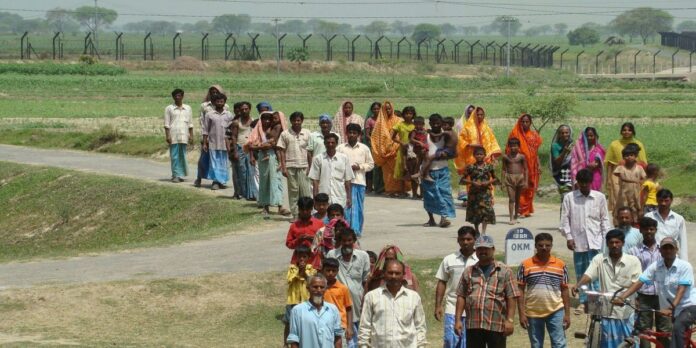The ruling AAP’s anti-immigrant rhetoric was exemplified last month when the Delhi Municipal Corporation directed all government-run schools to stop the enrolment of “illegal Bangladeshi migrant” children, besides informing the police in the event there were “doubts” on such students’ citizenship status.
Earlier the same month, Delhi Lieutenant Governor V K Saxena, an appointee of the BJP-led central government, ordered the heads of the civil bureaucracy and the police to conduct a sustained drive to “identify and take action” against illegal Bangladeshi immigrants living in the sprawling national capital.
Consequently, 14 alleged Bangladeshi illegal immigrants were “deported” to their home country in December 2024 after the police used “data analytics” and “ground intelligence” techniques.
Clearly, just ahead of the elections, both political parties in Delhi have sought to “outbid” each other in their anti-immigrant posturings and rhetoric.
Anti-immigrant policies and rhetoric, especially those directed specifically at undocumented Bangladeshi settlers, are not new in Delhi. In the late 1980s, some political parties “decided to politicise the issue to polarise Hindu votes” at the national level by projecting and describing Bangladeshi undocumented immigration as a “demographic invasion”.
Detecting and deporting:
This was followed in the early 1990s with ‘Operation Pushback’, an exclusionary drive to “detect and deport” Bangladeshi illegal immigrants from Delhi. At the heart of such “xenophobic discourses” was the identification of Bangladeshi settlers not so much as unauthorised or undocumented migrants but as “Muslim infiltrators” who posed a threat to India’s security and stability.
In its high-octane campaign at the national level in 2014, the BJP leadership promised to throw out Bangladeshi immigrants in the event of the party’s victory in the general elections. Once in power, the party sought to implement a controversial anti-immigrant exercise – the National Register of Citizens — aimed at weeding out alleged Bangladeshi settlers in Assam.
The AAP government’s exclusionary measure in Delhi resonates with a similar move in the US in 2018 when border control authorities were empowered to take into custody children of immigrants trying to cross the US-Mexico border. At that time, the issue prompted media scrutiny of the impact on immigrant children when their parents seek to illegally cross borders.
In India, restrictive measures aimed at “preventing illegal Bangladeshi migrants’ enrolment” in schools raise questions on immigrant rights and the much more vexed and contested issue of belonging and citizenship.
Inclusion and exclusion:
In India, the cross-border movement of foreign nationals is governed by a troika of laws – the 1920 Passport Act, the 1946 Foreigners Act and the 1939 Registration of Foreigners Act. Over the years, and certainly since 1971, lax border controls have ensured the entry of millions of Bangladeshi nationals who, over time, ‘obtained’ documents – by fair and unfair means – of citizenship.
The government’s position on undocumented Bangladeshi immigrants relies on a statist discourse that equates “infiltrators” only with Muslims even as those belonging to other minority religious denominations are deemed as “migrants” faced with “persecution in their countries”.
At the same time, “eligible legal migrants” can acquire citizenship through naturalisation or registration. This position was adopted to circumvent legalities related to refugees, especially when the Indian state is not a signatory to any international instrument or covenant on refugees.
This is particularly problematic in the context of about 40,000 Rohingya who remain interned in camps in Delhi and Jammu, with little or no rights, especially for their children.
The competition between the BJP and the AAP to outdo each other on the issue of Bangladeshi immigrants settled in Delhi comes at a time when India-Bangladesh relations are at their lowest. The anti-immigrant measures in Delhi, coupled with tensions between the border guarding forces of the two countries, have served to deepen anti-India sentiments in Bangladesh.
About author: Sucharita Sengupta is a Postdoctoral Fellow at the Jindal School of Art and Architecture, O.P. Jindal Global University, Sonipat, Haryana, and is affiliated with the Mahanirban Calcutta Research Group, Kolkata.
This is an abridged version. Originally published under Creative Commons by 360info™.






Good action, it should be continued against such immigrants…
It’s good story covered and unveiled by The Scooper,,